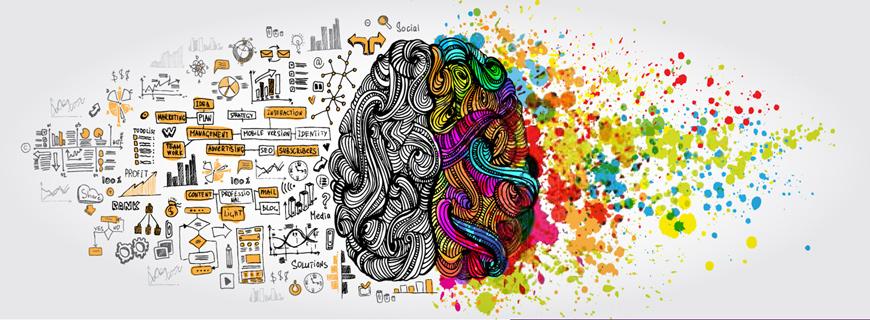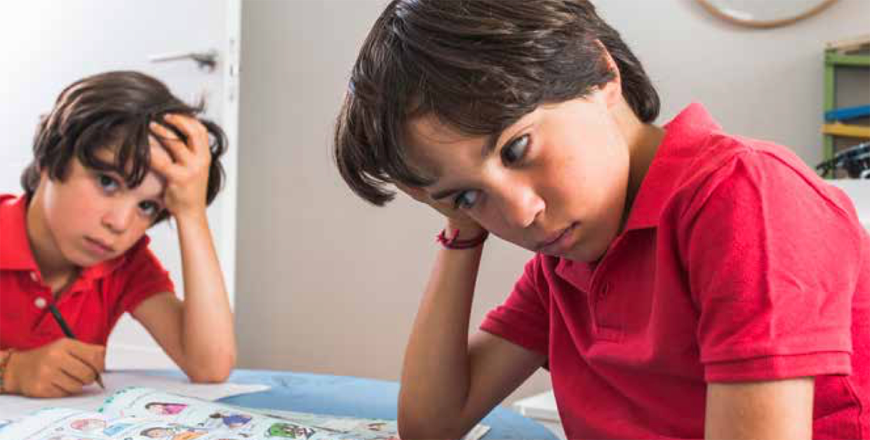You are here
Fuelling creativity
By Dr Tareq Rasheed , Family Flavours - Oct 18,2020 - Last updated at Oct 18,2020

Photo courtesy of Family Flavours magazine
By Dr Tareq Rasheed
International Consultant and Trainer
While some people have a natural propensity for creative thinking, anyone can develop the skill. Here, I introduce you to several tools for enhancing creativity and fuelling and energising our brains.
We are born with a built-in computer — the human brain has several centres and capacities to store, deal and manage information supported and given by God to everyone. Three parts of our inner workings deal with information:
• Primitive: This is the operating system that helps us start our lives from birth. It contains 8 per cent information that includes genetics, characteristics, talent and two types of fear (fear of falling and fear of noise)
• Pattern: From the start of life, we begin acting and reacting to our environment. We start building and storing information based on what we gather from our parents, relatives and society, as well as our five senses, creating an information system of 88 per cent that most people rely on to manage their lives, decisions, choices and actions and reactions in life
• Creative: This is the part that we can use to create new concepts, ideas and formulas that form 4 per cent of our brain capacity
Creativity is often referred to as “thinking outside of the box” but what is this box? The box is the “pattern” mind which contains ready built-in formulas that prevent and limit the use of the creative part of the brain.
Creative people are those who use the creative part of the brain. Creativity is both a talent and a skill. Research shows that at the age of six or seven, by the end of the first grade in traditional schools and in rigid cultural environments, children lose about 80 per cent of their natural creativity and start following a pattern. Children are born creative and the questions they always ask and the curiosity they show at early ages are the signs of creativity, but then the input they get from others limit this natural creativity.
Tools to enhance creativity
Randomness: Creative people can connect random concepts to get new ideas. Randomness can help generate creative ideas. To solve a particular problem, take a random word and set out to see how this random word can help. Here’s a real-life example: to improve the traffic system, designers used the word balcony and from this word, the design of traffic lights became horizontal as extensions of balconies outside the borders of buildings. You can take a random word from Tables of Random Words off the Internet or open any book to any page and select a random word and start relating it with what you want. Several authors and writers use this method for writing stories and novels.
What If: Asking “what if” is an excellent tool to create several uses for things. If, for instance, you have a lot of hangers in your closet and you want to reuse them in a new way, start asking:
• What if I were a (teacher, engineer, gardener, mechanic…), how could I use them?
• What if I were (in the kitchen, bedroom, garden, bathroom…), how could I use them?
• What if to use them with (a table, car, ball, stone...)?
You will find that you can generate thousands of ideas by applying this creativity tool!
Others Point of View (OPV): Stand, metaphorically, in another person’s shoes and see how you would deal with a problem or a concept. Several new ideas will come to mind using this technique.
Brainstorming: This technique is used widely nowadays. It involves forming diverse teams to create new ideas about a challenge or a specific problem.
You can invest
in your brain!
To enhance creativity, people are encouraged to invest in their brains. But creativity may require certain environments and times:
• Best places: restrooms, quiet places, parks and gardens, in front of the sea, at night in the desert
• Best times: early morning, at sunset, before sleeping
Barriers to creativity
Cultural, habitual and pattern thinking, rigid instructions, stress, depression and environmental limitations can all be barriers to creativity. Creative people may hear comments like “Be serious”, “Are you kidding?”, “This is for kids” and “Be logical”.
Creativity is a capacity that all people have but barriers prevent many people from investing in it. Change and creativity go hand-in-hand: to be creative, one must change old patterns, old techniques and old sayings.
Good luck!
Reprinted with permission from Family Flavours magazine
Related Articles
WASHINGTON — Modern brains are younger than originally thought, possibly developing as recently as 1.5 million years ago, according to a rec
By Marian PodoleanuHealth and Fitness Educator We know that exercise makes us healthier and helps us lose weight, prevent injuries and
Have you ever helped your child memorise material for a test and then end up with your child going “blank” during the exam? To help your child reduce “blanking out”, your child needs to practise and try different memory strategies.




















